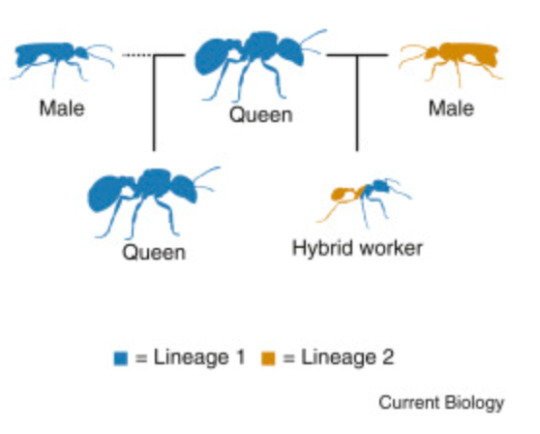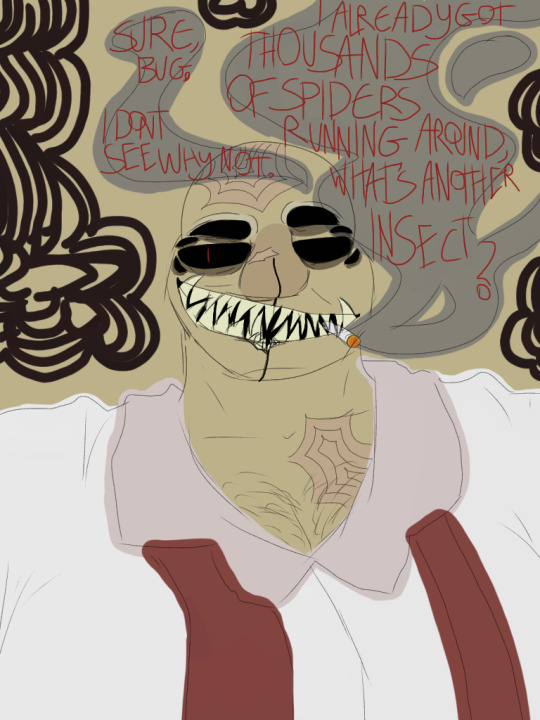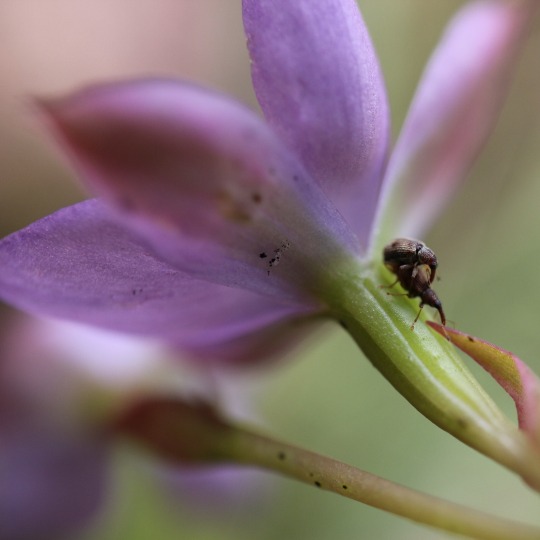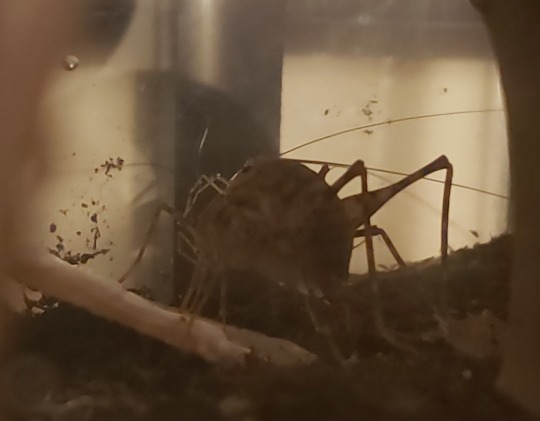#insect reproduction
Explore tagged Tumblr posts
Text
Soooooo...apparently mating cicadas get tied together like dogs.

The one on the left was slowly, but determinedly, dragging their partner around by the ass. They had other things to do, dammit!
#cicadas#the cicada song is definitely getting louder now as i could hear it through my over-ear headphones as i walked to the library#insect reproduction
0 notes
Text
funniest thing i own is a book that tries to psychosexually analyze basically everything that ever happened in doctor who in like the most reaching, overwrought and inhuman way possible and then when it gets to clara (probably the easiest character to discuss this way on a canonical level) the author is just like "nothing of note really happens in the text so I'm going to turn to viagra fanfiction instead"
#when i say inhuman i mean it describes gay sex like a scientific paper describes insect reproduction#talking tag
594 notes
·
View notes
Text




Copidosoma floridanum is an Encyrtid wasp whose brood is a fascinating example of polyembryony, in which multiple embryos form from a single egg. It is primarily a parasitoid of Noctuid moths in the subfamily Plusiinae. The Encyrtid egg will produce thousands of clone embryos. The mother C. floridanum will sometimes lay one male egg per host, or one female egg, or sometimes both. What's even more fascinating is that the wasp larvae have a caste system: the reproductives and the (precocious) soldiers. The reproductive larvae emerge during the caterpillar's last instar, consume it, and pupate into adult wasps. The soldiers emerge earlier, but never molt and die when the host dies. Their sole purpose is to protect their reproductive siblings from other parasitoid rivals and to kill their own opposite-sex precocious siblings. Since male soldiers compete for resources (caterpillar), by killing some of them off, the sterile soldiers are helping their genes survive by securing more resources for their clone reproductive siblings. In mixed-sex broods, the male larvae will try to hide and encyst themselves in the caterpillar's fat body to escape their murderous sterile sisters. Copidosoma competes with Microgastrine species such as Microplitis demolitor and Glyptapanteles pallipes. C. floridanum demonstrates haplodiploidy where unfertilized eggs become haploid males and fertilized eggs become diploid females. There are both male and female soldiers, but male soldiers tend to be less aggressive towards competitors. However, C. floridanum isn't invincible. There is one competitor, Trichogramma, that is also an egg parasitoid, and only uses the eggs of the moths. The adult wasps emerge long before the caterpillars hatch. When Trichogramma and Copidosoma end up in the same egg, the former usually ends up victorious.
I spent many hours doing research on this topic, but if there are any mistakes, I welcome any corrections!
#hymenoptera#insect#entomology#wasp#wasps#apocrita#parasitica#Microgastrinae#Encyrtidae#Trichogrammatidae#Copidosomafloridanum#Trichogramma#precocious#soldier#reproductive#larvae#castesystem#Plusiinae#Noctuidae#Ichneumonoidea#Chalcidoidea#polyembryonic#Braconidae
156 notes
·
View notes
Text



Just thought you guys would have wanted to know about this.

(picture source: Yoshizawa et al. (2014), "Female Penis, Male Vagina, and Their Correlated Evolution in a Cave Insect", Current Biology)
69 notes
·
View notes
Text

Twirls his stupidly big ears/
#le ocs#my art#doodle#sketch#hey guuys. *voice of a sickly dying dog*#sorry for not drawing#this is probably the only thing you’ll get this month#welcome to my Ironic hypothetical furry dating sim where knowledge in insect behavior and reproduction is a must#people start booing
520 notes
·
View notes
Text


Some brush pile visitors from last week: what I think is a female Baltimore Oriole collecting fluff for her nest and a pair of Bumble Flower Beetles investigating a dying leaf (the second beetle is the blurry brown blob near the bottom, sorry about my phone camera lol)
#first time seeing one of those beetles!! i love their antler antennae they're so cool looking.#i don't know much about their reproductive habits but they definitely mated and there may be eggs sealed upside the leaf?#i had to leave and when i came back the beetle at the bottom was like. crimping up the edges of the leaf like something was tucked inside.#birds#baltimore oriole#bugs#insects#bumble flower beetle#nature#spring#original photography#mine
20 notes
·
View notes
Text
hey guys does anyone have that one tumblr post/meme of Sparda asking Eva if they could have normal sex but Eva demanding "DEMON FORM! NOW!" please I cant find it anywhere because last time i saw it was from a reblog because the op was deactivated
#devil may cry#dmc eva#dmc sparda#wait in what form were dante and vergil conceived#im looking up insect reproduction on wikipedia rn because its the closest thing to sparda's anatomy that i can assume
9 notes
·
View notes
Text
I just realized that Messor barbarus can't sting. And now I need to rethink something I thought was obvious about seed collecting ants.
Pogonomyrmex and Veromessor (the genuses of harvester ants we have in the Americas) can sting. It seems that much like "Army Ants" the group "harvester ants" isn't as cohesive as I thought.
That said... they are somewhat related, both practice social hybridogenesis.
I'm stunned. Ants shock me every single day! They can't keep getting away with this!
Please don't ask me to explain this yet I'm still trying to understand what the heck these ants are even doing.

#ant#ant propaganda#bugs#insects#myrmecology#antblr#bugblr#antposting#ant secrets#harvester ants#Hybridogenesis#reproductive system
20 notes
·
View notes
Note
would arache adopt me if I asked very nicely
sitting batting eyelashes image

[SURE, BUG. I ALREADY GOT THOUSANDS OF SPIDERS RUNNING AROUND, WHAT'S ANOTHER INSECT?]
#Banesberry art#Ask world#anon#altoclef.exe#Before anyone comes at me#Arache uses the words 'Bug' and 'Insect' as nicknames#The same way people say 'Dude' or 'Bro' sksjsks#But by spiders he means that literally. He has two separate reproductive systems.#(He lays eggs)#You didnt hear that from me though 8⁰]#Anyways Intersex Dealer for the win#Torren Arache#buckshot roulette#buckshot roulette art#buckshot roulette dealer#the dealer
14 notes
·
View notes
Text

Well This Is Orchid
Sun Orchid, possibly Shy Sun Orchid, Thelymitra graminea.
Two weevils, soon to be more I suppose. I won't try to classify them, they need privacy right now.
Castle Rock, Porongorup.
2022
Canon 60D
Canon EF-s 35mm f/2.8 IS STM macro
#weevils#orchids#entomology#sun orchid#porongorup#albany#australian orchids#purple#purple orchid#purple plants#purple flowers#reproduction#insects#macro#flowers#plants#mountain#castle rock
10 notes
·
View notes
Text
sooooo Dirt and Loofah's introduction went well, id say... lmao

congrats on the sex 🎉
#insects#pet bugs#crickets#camel cricket#spider cricket#cave cricket#spricket#rhaphidophoridae#bugblr#invert pets#dirt#loofah#reproduction#social#research#pics
6 notes
·
View notes
Text
A parasitoid wasp that insinuates itself so completely into the life cycle of its insect host that the host never gets to form its own imago:
As they feed on their pupating host, male parasitoids absorb the host's gonads
Males with male gonads mate with males that have female gonads, forming fertile host eggs
Males with female gonads can then mate with females, using a host egg as a spermatophore
The female fertilizes her own eggs, then re-lays the host egg implanted with her own
The host larva is born with wasp larvae already inside
They act as symbionts, remaining unobtrusive, increasing vigor and hunger of the host larva so it grows extra large
When the nice fat larva pupates, the wasp larvae devour it except for the gonads, and the cycle begins anew
#ideas#biology#insects#parasite#parasitism#wasps#larvae#reproduction#weird#nature#why hasn't nature done this already#or if it has why don't I know about it#fictional biology
6 notes
·
View notes
Text
String identified: ga! a t a g ag a t ga c t t a t t, t t acta ga t cat g tat t! a t a c t t t g t t a actg ct t ag a . t t.
Closest match: Oppiella nova Common name: Oribatid Mite

(image source)
guards! read me my bedtime yaoi
#tumblr genetics#genetics#biology#science#bugs#insects#mites#Oppiella nova#Oribatid Mite#incredibly interesting species#every mite in this species is actually female!#it's one of the few species to show that survival through only asexual reproduction is possible!
201K notes
·
View notes
Text
Sims 4 octopus challenge. Short lifespan. Parents die or immediately jump to Elder life stage after reproducing. Sims are rigged towards twins/triplets through traits and lot challenges. Goal is to achieve as much as possible in light of these challenges. I’d probably have them living in colony/extended family units but do what you want.
#idk why I like giving sims the social and reproductive structures of insects and sea creatures#for this one I was thinking about how it’s not fair that octopi only live a few years and die after reproducing#probably one of the things keeping them from developing civilization#simposting#txt
0 notes
Text
String identified: at t a a. t cg a a ac C at c at
Closest match: Bombyx mori genome assembly, chromosome: 15 Common name: Domestic Silk Moth

(image source)
I want to be an evil wizard. but I keep choosing kindness
#tumblr genetics#genetics#biology#science#wizards#wizardposting#bugs#insects#moths#domestic silk moth#silk moth#this species of moth has been selectively bred for approximately 5000 years!!#the cocoons produced by these moths would be spun into silk! hence the name silk moth!#as a result they are entirely dependent on humans for their reproduction#(as opposed to the wild silk moths. which still exist!)
58K notes
·
View notes
Text
Surprising New Research Links Infant Mortality to Crashing Bat Populations. (New York Times)
Excerpt from this New York Times story:
The connections are commonsense but the conclusion is shocking.
Bats eat insects. When a fatal disease hit bats, farmers used more pesticides to protect crops. And that, according to a new study, led to an increase in infant mortality.
According to the research, published Thursday in the journal Science, farmers in affected U.S. counties increased their use of insecticides by 31 percent when bat populations declined. In those places, infant mortality rose by an estimated 8 percent.
“It’s a seminal piece,” said Carmen Messerlian, a reproductive epidemiologist at Harvard who was not involved with the research. “I actually think it’s groundbreaking.”
The new study tested various alternatives to see if something else could have driven the increase: Unemployment or drug overdoses, for example. Nothing else was found to cause it.
Dr. Messerlian, who studies how the environment affects fertility, pregnancy and child health, said a growing body of research is showing health effects from toxic chemicals in our environment, even if scientists can’t put their fingers on the causal links.
“If we were to reduce the population-level exposure today, we would save lives,” she said. “It’s as easy as that.”
The new study is the latest to find dire consequences for humans when ecosystems are thrown out of balance. Recent research by the same author, Eyal Frank, an environmental economist at the University of Chicago, found that a die-off of vultures in India had led to half a million excess human deaths as rotting livestock carcasses polluted water and spurred an increase in feral dogs, spreading waterborne diseases and rabies.
“We often pay a lot of attention to global extinctions, where species completely disappear,” Dr. Frank said. “But we start experiencing loss and damages well before that.”
5K notes
·
View notes